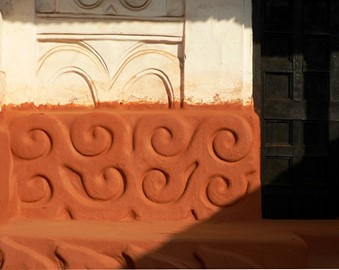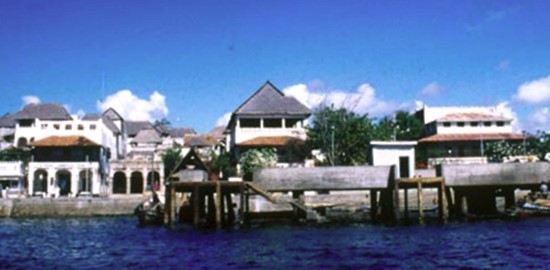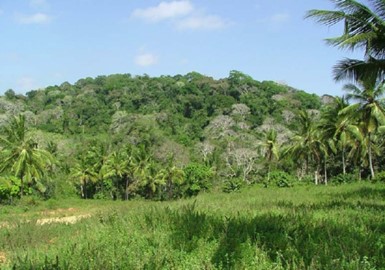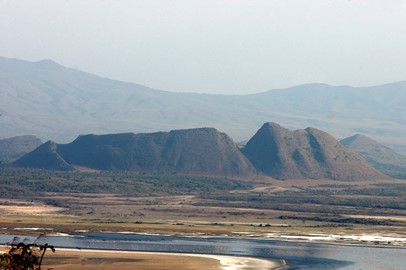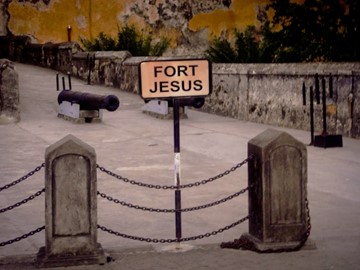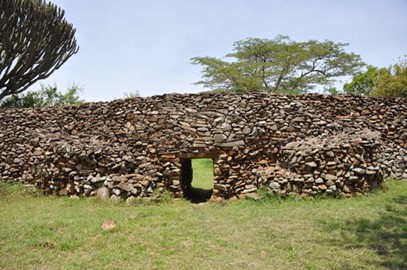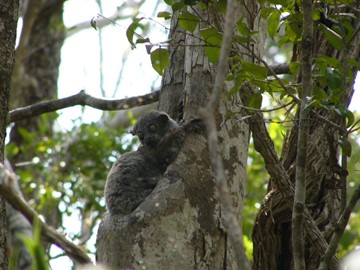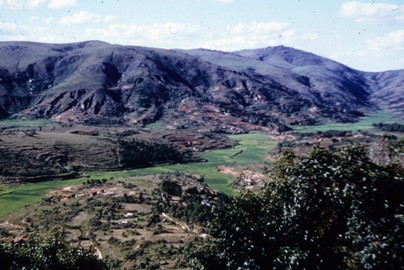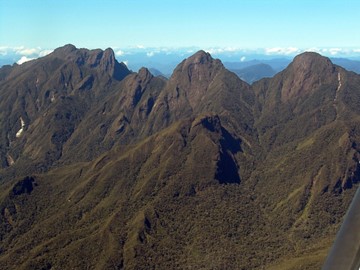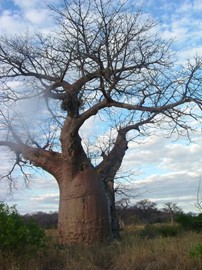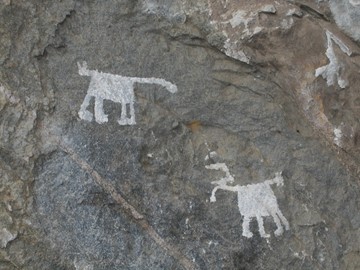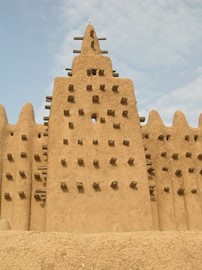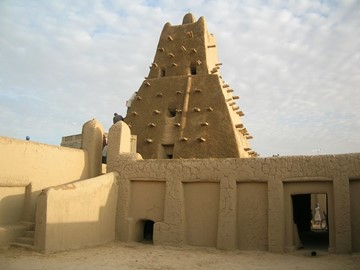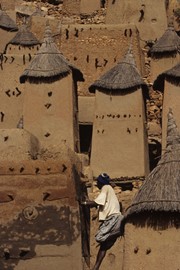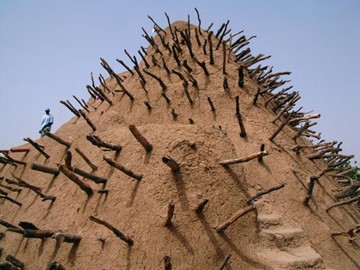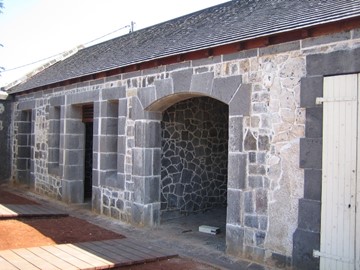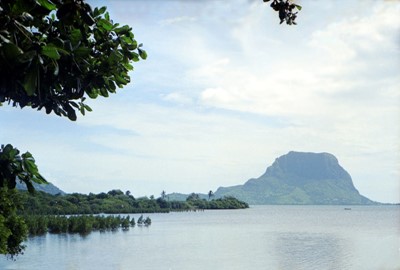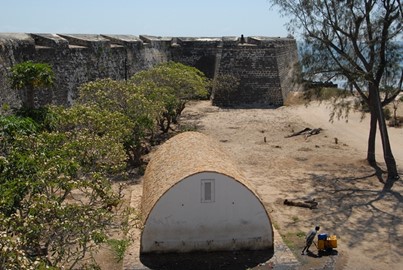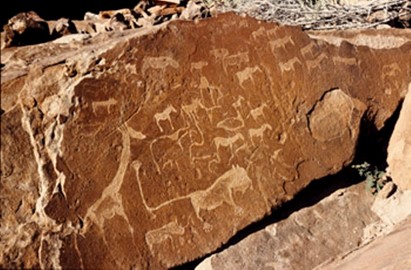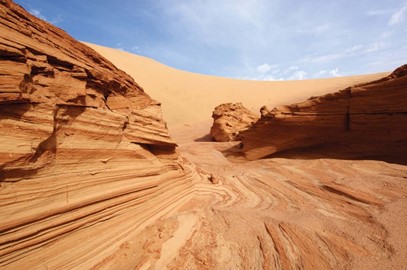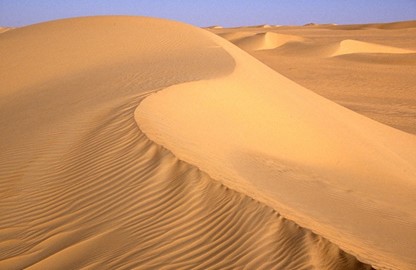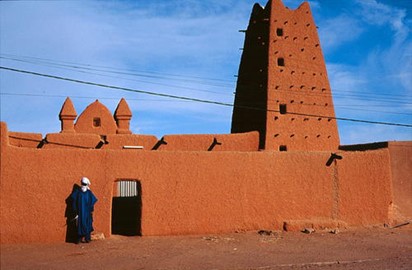region :: africa
Asante Traditional Buildings
The Asante Traditional Buildings, a UNESCO World Heritage site in Ghana, showcase the architectural prowess and cultural heritage of the Asante people. Constructed primarily from mud, timber, and thatch, these structures feature intricate designs and vibrant colors, reflecting the society’s spiritual beliefs and social hierarchy. Built in the 18th and 19th centuries, they served as residences for chiefs and priests, embodying the power and wealth of the Asante Kingdom. Today, these well-preserved buildings ... Read More
Lake Turkana
Lake Turkana, a UNESCO World Heritage site in Kenya, is a striking desert lake renowned for its unique jade-green waters and rich biodiversity. Often called the 'Cradle of Mankind,' it hosts significant archaeological sites with fossils and artifacts that trace early human evolution. The surrounding harsh volcanic landscape, coupled with its role as a vital habitat for migratory birds and rare species, underscores its global scientific and ecological value.
Lamu
Lamu Old Town, a UNESCO World Heritage site in Kenya, is a well-preserved coastal settlement showcasing a unique blend of Swahili architecture and traditional urban design. Its narrow streets, coral stone buildings, and intricately carved wooden doors reflect a rich cultural heritage shaped by centuries of trade and interaction. Recognized for its historical significance, it stands as a testament to the enduring legacy of its local communities.
Mijikenda Kaya Forests
The Mijikenda Kaya Forests, a UNESCO World Heritage site in Kenya, are sacred groves that preserve the cultural heritage of the Mijikenda people. These fortified hilltop settlements, surrounded by dense coastal forests, feature remnants of traditional villages once used as living spaces and ritual sites. Recognized for their historical and ecological value, the kayas reflect a unique blend of human settlement and natural preservation.
Kenya Lake System
The Kenya Lake System in the Great Rift Valley, a UNESCO World Heritage site, encompasses three interconnected lakes—Bogoria, Nakuru, and Elementaita—renowned for their ecological diversity and stunning natural beauty. These soda lakes support vast populations of flamingos, endangered species like the black rhino, and over 450 bird species, thriving in a dramatic volcanic landscape. Recognized for its outstanding biodiversity and geological significance, the site highlights the delicate balance of life in a... Read More
Fort Jesus
Fort Jesus, Mombasa, a UNESCO World Heritage site in Kenya, is a striking 16th-century Portuguese fortress built to protect strategic coastal interests. Constructed from coral stone in a cross-shaped design, it exemplifies military architecture of the era and reflects the region’s historical trade significance. Its well-preserved walls, bastions, and cannons highlight centuries of cultural interactions and colonial influence.
Mount Kenya
Mount Kenya, a UNESCO World Heritage site in Kenya, is a striking volcanic peak renowned for its rich biodiversity and dramatic landscapes. It features rugged glaciers, alpine meadows, and dense forests that support a variety of unique wildlife, including rare species like the Mount Kenya leopard. This natural wonder also holds cultural significance for local communities, who regard it as a sacred site. Its pristine ecosystems and geological beauty make it a global treasure.
Thimlich Ohinga
Thimlich Ohinga, a UNESCO World Heritage site in Kenya, is an impressive archaeological site featuring dry-stone walled enclosures built around the 16th century. This well-preserved settlement highlights the ingenuity of early pastoral communities, with its sturdy, mortarless stone structures designed for security and communal living. Recognized for its historical and cultural value, it offers insight into ancient architectural traditions and social organization.
Tsingy de Bemaraha
Tsingy de Bemaraha, a UNESCO World Heritage site in Madagascar, is a striking limestone karst landscape featuring jagged peaks, deep canyons, and a network of underground rivers. This unique geological formation, often called a 'stone forest,' hosts diverse ecosystems with rare plant and animal species, including lemurs and endemic flora. Its rugged terrain and natural beauty make it a globally significant site for biodiversity and geological study.
Ambohimanga
The Royal Hill of Ambohimanga, a UNESCO World Heritage site in Madagascar, is a historic fortified village that served as a spiritual and political center for the Merina Kingdom. This well-preserved site features royal palaces, burial grounds, and sacred spaces, reflecting centuries of cultural traditions and architectural ingenuity. It remains a symbol of Malagasy identity and a testament to the island's rich history.
Rainforests of the Atsinanana
The Rainforests of the Atsinanana, a UNESCO World Heritage site in Madagascar, are a biodiversity hotspot renowned for their unique ecosystems and endemic species. These tropical rainforests host an exceptional array of flora and fauna, including rare lemurs and diverse plant life found nowhere else on Earth. Recognized for their global ecological significance, they face threats from deforestation and human activity, underscoring the need for conservation efforts.
Lake Malawi
Lake Malawi, a UNESCO World Heritage site in Malawi, is renowned for its exceptional biodiversity and crystal-clear waters. This freshwater lake, one of the African Great Lakes, hosts an extraordinary variety of fish species, including hundreds of endemic cichlids found nowhere else on Earth. Its ecological significance and stunning natural beauty make it a globally recognized treasure.
Chongoni Rock Art Area
This World Heritage site in Malawi features an exceptional concentration of ancient rock art, with over 120 sites showcasing paintings by hunter-gatherer and farming communities. Spanning thousands of years, the artwork reflects cultural traditions, rituals, and the spiritual beliefs of the people who once inhabited the region’s granite hills. Preserved by natural rock shelters, these vivid depictions offer a rare glimpse into the historical and artistic legacy of central Africa.
Djenné
The Old Towns of Djenné, a UNESCO World Heritage site, are historic settlements in Mali renowned for their unique mud-brick architecture, including the iconic Great Mosque. Established as a trading hub along the trans-Saharan routes, these towns reflect centuries of cultural and commercial exchange. The well-preserved urban layout and traditional building techniques highlight their historical significance and architectural ingenuity. Today, they stand as a testament to Mali's rich heritage and early urban d... Read More
Timbuktu
Timbuktu, a UNESCO World Heritage site in Mali, is a historic city renowned for its role as a medieval center of trade, culture, and Islamic scholarship. Founded around the 11th century, it flourished due to its strategic location on trans-Saharan trade routes, becoming a hub for salt, gold, and knowledge exchange. The city is home to iconic mud-brick architecture, including the Sankore Mosque and University, which highlight its intellectual legacy. Despite facing threats from conflict and desertification, ... Read More
Bandiagara
Bandiagara, a UNESCO World Heritage site in Mali, is renowned for its unique cultural and architectural significance. Nestled within a dramatic escarpment, it features ancient cliff-dwelling villages built by the Dogon people, showcasing their traditional mud-brick homes and granaries perched along the sandstone cliffs. This historic site reflects centuries of human ingenuity, blending seamlessly with the natural landscape, and preserves the rich spiritual and agricultural heritage of the region.
Tomb of Askia
The Tomb of Askia, a UNESCO World Heritage site in Mali, is a striking 15th-century mud-brick pyramid built by Emperor Askia Mohammad I as his mausoleum. This architectural marvel, featuring a stepped design and wooden protrusions for structural support, exemplifies West African Sahelian style and reflects the region’s historical Islamic influence. It served as a royal tomb and mosque, symbolizing the power of the Songhai Empire during its peak. Today, it stands as a testament to Mali’s rich cultural herita... Read More
Aapravasi Ghat
Aapravasi Ghat, a UNESCO World Heritage site in Mauritius, served as an immigration depot from 1849 to 1923, where over half a million indentured laborers from India arrived to work on sugar plantations. Built in 1849, this historic complex includes remnants of the original structures like the steps, hospital block, and sheds, reflecting its role in the global migration of labor during the colonial era. It stands as a testament to the indentured labor system that shaped modern Mauritius and influenced plant... Read More
Le Morne
Le Morne Cultural Landscape, a UNESCO World Heritage site, is a rugged mountain peninsula in Mauritius that served as a refuge for escaped slaves in the 18th and 19th centuries. Its dramatic cliffs and surrounding lagoon highlight its natural beauty, while its historical significance lies in its role as a symbol of resistance against slavery. The site includes remnants of settlements and a poignant memorial commemorating the struggles of the maroon community. Today, it stands as a testament to human resilie... Read More
Island of Mozambique
The Island of Mozambique, a UNESCO World Heritage site, is a historic island off the northern coast of Mozambique renowned for its rich cultural and architectural legacy. Once a major trading hub in the Indian Ocean, it blends African, Arab, and European influences, evident in its well-preserved colonial buildings, including the 16th-century Fortress of São Sebastião and the Chapel of Nossa Senhora de Baluarte. Its strategic importance and unique heritage make it a significant historical landmark, reflectin... Read More
Twyfelfontein
Twyfelfontein, a UNESCO World Heritage site in Namibia, is renowned for its ancient rock engravings and paintings, created by hunter-gatherer communities over 6,000 years ago. The site features over 2,500 carvings, depicting animals like giraffes, rhinos, and ostriches, as well as human and animal footprints, offering a glimpse into prehistoric life and beliefs. Its geological significance is highlighted by the dramatic sandstone formations and evidence of early tool-making. This well-preserved open-air gal... Read More
Namib Sand Sea
The Namib Sand Sea, a UNESCO World Heritage site in Namibia, is a stunning coastal desert renowned for its vast expanse of towering sand dunes, some reaching heights of over 300 meters. This unique landscape, shaped by wind and time, features striking red and orange hues, creating a dramatic contrast with the Atlantic Ocean. Recognized for its exceptional natural beauty and ecological significance, it supports a surprising variety of adapted wildlife, including rare species like the fog-basking beetle. Its ... Read More
Air and Ténéré
The Air and Ténéré Natural Reserves in Niger, a UNESCO World Heritage site, are renowned for their vast desert landscapes and unique biodiversity. This protected region harbors rare species like the addax antelope and fennec fox, alongside striking geological formations such as sand dunes and volcanic massifs. Recognized for its ecological and cultural significance, the site also holds traces of prehistoric human activity, offering insights into ancient civilizations. It stands as a critical conservation ar... Read More
Agadez
The Historic Centre of Agadez, a UNESCO World Heritage site in Niger, is a well-preserved example of a traditional Sahelian urban settlement. Founded in the 11th century, it flourished as a key trans-Saharan trade hub, blending indigenous and Islamic architectural influences. Its notable features include the iconic 27-meter-high mud-brick minaret of the Agadez Mosque, a testament to local craftsmanship, alongside a labyrinth of narrow streets and earthen homes. Today, it stands as a cultural treasure, refle... Read More
Sukur
The Sukur Cultural Landscape, a UNESCO World Heritage site in Nigeria, features a historic hilltop settlement with the Hidi Palace overlooking terraced fields and villages below. Recognized in 1999, it showcases a well-preserved example of traditional land use and architecture, including dry-stone structures and sacred symbols tied to spiritual practices. The site also preserves remnants of a once-thriving iron-smelting industry, reflecting centuries of cultural and economic continuity. Its intact heritage ... Read More
